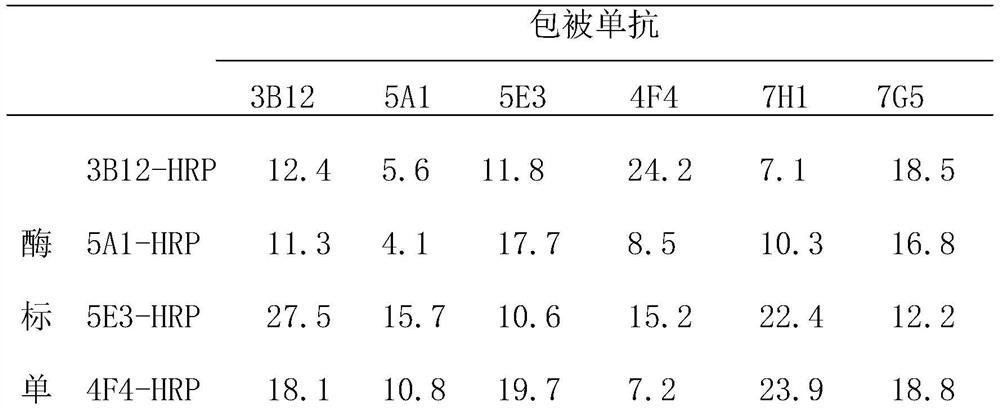Preparation method of clostridium difficile recombinant protein monoclonal antibody and application thereof
A single-chain antibody and heavy chain technology, applied in anti-bacterial immunoglobulin, botanical equipment and methods, biochemical equipment and methods, etc., can solve the problem of distortion of test results, poor specificity of monoclonal antibodies, large batch-to-batch differences, etc. question
- Summary
- Abstract
- Description
- Claims
- Application Information
AI Technical Summary
Problems solved by technology
Method used
Image
Examples
Embodiment 1
[0011] Example 1: GDH dominant antigen epitope selection
[0012] Clostridium difficile GDH was used as the target antigen, and the hydrophilicity and antigenicity of its epitope sequence were analyzed by biological software DNAssist2.0, and the A dominant antigen epitope and the B dominant antigen epitope were selected. At the same time, the sequence comparison results showed that the selected two dominant antigenic epitopes, A and B, had high sequence specificity and broad spectrum, and were the common epitopes of GDH, and had no obvious homology with other protein sequences.
Embodiment 2
[0013] Example 2: Concatenation of GDH dominant antigenic epitopes
[0014] In order to enhance the stimulation of the selected epitope on the immune system of mice and facilitate subsequent experiments, the two dominant epitope sequences of A and B of GDH were respectively repeated and then connected by a flexible fragment (four consecutive glycines) to obtain Amino acid sequence of the recombinant protein.
Embodiment 3
[0015] Embodiment 3: optimize the nucleotide sequence of encoding recombinant GDH protein
[0016] In order to increase the expression of recombinant protein in Escherichia coli, under the premise that the amino acid sequence of the recombinant protein remains unchanged, the amino acid sequence encoding the recombinant protein is converted into the corresponding nucleotide sequence according to the preferred codons of Escherichia coli, and the upstream and downstream After adding the nucleotide sequences corresponding to the restriction sites BamHI and EcoRI respectively, they were synthesized by Hangzhou Xianzhi Biotechnology Co., Ltd. The synthesized target gene was cloned into the pMD19-T vector (Bao Bioengineering Dalian Co., Ltd.).
PUM
 Login to view more
Login to view more Abstract
Description
Claims
Application Information
 Login to view more
Login to view more - R&D Engineer
- R&D Manager
- IP Professional
- Industry Leading Data Capabilities
- Powerful AI technology
- Patent DNA Extraction
Browse by: Latest US Patents, China's latest patents, Technical Efficacy Thesaurus, Application Domain, Technology Topic.
© 2024 PatSnap. All rights reserved.Legal|Privacy policy|Modern Slavery Act Transparency Statement|Sitemap


